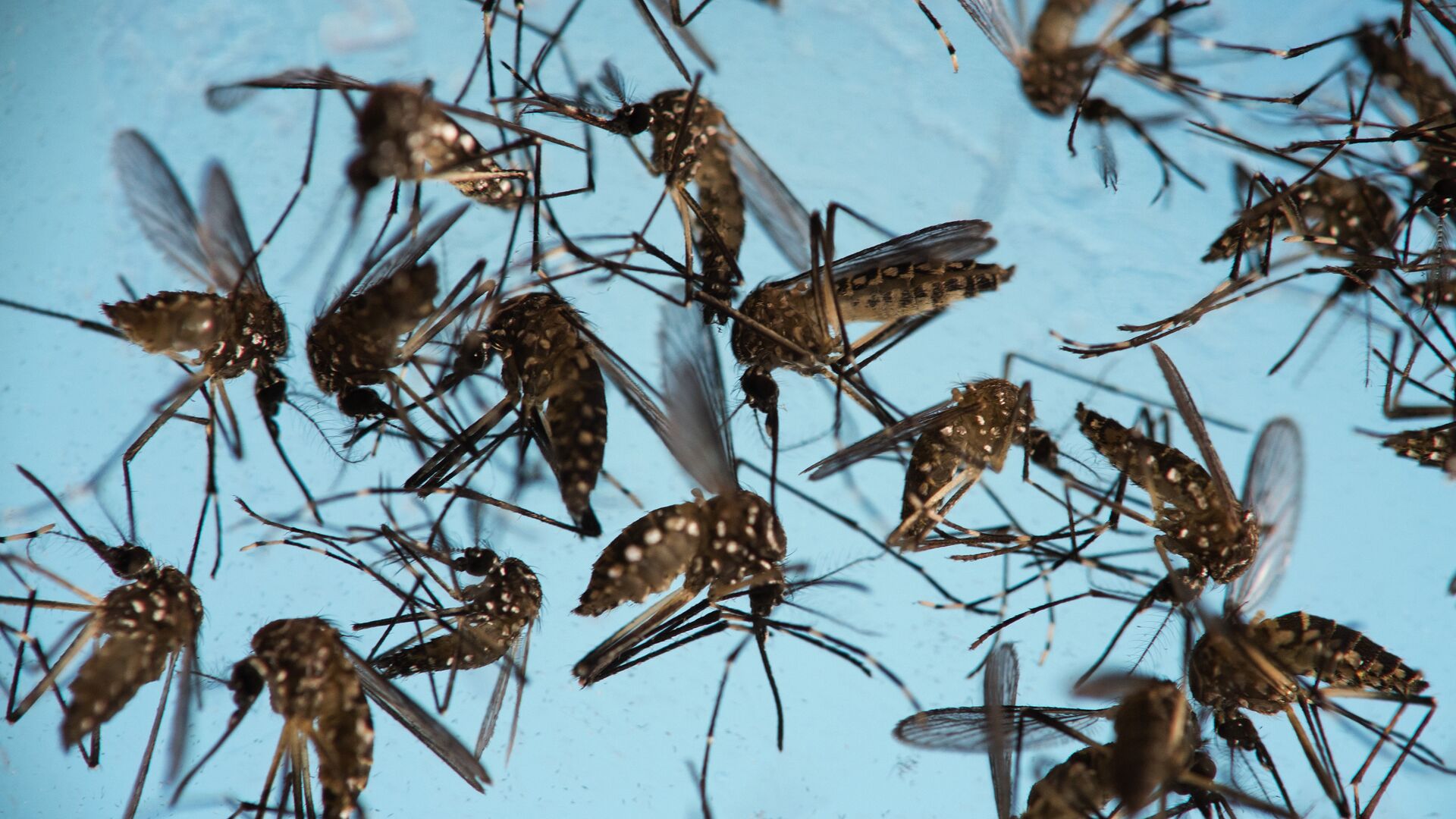https://sputnikglobe.com/20240506/la-battles-mosquitoes-by-releasing-even-more---1118278717.html
LA Battles Mosquitoes by Releasing Even More
LA Battles Mosquitoes by Releasing Even More
Sputnik International
The mosquitoes - which were first detected in 2011 - are well adapted to laying eggs in small water sources and have also developed a resistance to insecticides, making it difficult to exterminate them.
2024-05-06T03:35+0000
2024-05-06T03:35+0000
2024-05-06T03:35+0000
americas
mosquitoes
aedes aegypti mosquitoes
los angeles
insects
flying insects
population control
https://cdn1.img.sputnikglobe.com/img/105543/69/1055436912_0:210:4000:2460_1920x0_80_0_0_35700855f88b0e643739a0cbdd30ff05.jpg
On Thursday, the Greater Los Angeles County Vector Control District launched a program to release tens of thousands of sterile male mosquitoes into the local environment. The invasive mosquitoes, called Aedes aegypti are low flying, bite during the day and are capable of spreading diseases like yellow fever, Chikungunya, Zika and dengue.The mosquitoes - which were first detected in 2011 - are well adapted to laying eggs in small water sources and have also developed a resistance to insecticides, making it difficult to exterminate them. About 20,000 sterile males were released. These mosquitoes were dyed, so they will be recognizable by appearing fluorescent under a black light. The males don’t bite, either, so the program does not pose a risk to human health. The district will continue to release mosquitoes in the target region of the Sunland-Tujunga area of LA, which could result in up to 32,000 mosquitoes per week before reaching a peak of about 60,000 before the program brings that number back down in the fall.The program intends to leave female mosquitoes with eggs that won’t hatch. A similar method has been used in the past on Mediterranean fruit flies and screwworms which are fly larvae that feed on living flesh.
americas
los angeles
Sputnik International
feedback@sputniknews.com
+74956456601
MIA „Rossiya Segodnya“
2024
Mary Manley
https://cdn1.img.sputnikglobe.com/img/07e6/01/0b/1092187887_0:0:2048:2049_100x100_80_0_0_0c2cc4c84f89aff034cc55bb01fb6697.jpg
Mary Manley
https://cdn1.img.sputnikglobe.com/img/07e6/01/0b/1092187887_0:0:2048:2049_100x100_80_0_0_0c2cc4c84f89aff034cc55bb01fb6697.jpg
News
en_EN
Sputnik International
feedback@sputniknews.com
+74956456601
MIA „Rossiya Segodnya“
Sputnik International
feedback@sputniknews.com
+74956456601
MIA „Rossiya Segodnya“
Mary Manley
https://cdn1.img.sputnikglobe.com/img/07e6/01/0b/1092187887_0:0:2048:2049_100x100_80_0_0_0c2cc4c84f89aff034cc55bb01fb6697.jpg
mosquitoes, los angeles, population control, disease, insects, kill mosquitoes
mosquitoes, los angeles, population control, disease, insects, kill mosquitoes
LA Battles Mosquitoes by Releasing Even More
Technicians have made the male mosquitoes sterile through a radiation process, hoping to drop the population size of the blood-thirsty insects.
On Thursday, the Greater Los Angeles County Vector Control District launched a program to release tens of thousands of sterile male mosquitoes into the local environment. The invasive mosquitoes, called
Aedes aegypti are low flying, bite during the day and are capable of spreading
diseases like yellow fever, Chikungunya, Zika and dengue.
The mosquitoes - which were first detected in 2011 - are well adapted to laying eggs in small water sources and have also developed a resistance to insecticides, making it difficult to exterminate them.
“Thousands of years ago, a strain of Aedes aegypti moved in close to people and started to specialize to live near houses and bite people,” said Daniel Hahn, a professor in the University of Florida’s Department of Entomology and Nematology. “They’re characterized as aggressive nuisance biters because they’ll bite you all day long.”
About 20,000 sterile males were released. These mosquitoes were dyed, so they will be recognizable by appearing fluorescent under a black light.
The males don’t bite, either, so the program does not pose a risk to human health.
The district will continue to release mosquitoes in the target region of the Sunland-Tujunga area of LA, which could result in up to 32,000 mosquitoes per week before reaching a peak of about 60,000 before the program brings that number back down in the fall.
The
program intends to leave female mosquitoes with eggs that won’t hatch. A similar method has been used in the past on Mediterranean fruit flies and
screwworms which are fly larvae that feed on living flesh.





